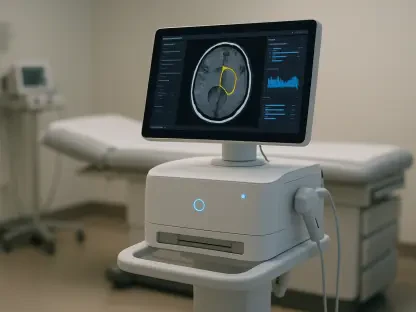A new wave of reform is sweeping through the United Kingdom’s healthcare system with the recent announcement of abolishing NHS England, the largest Quango in history. Spearheaded by Sir Keir Starmer, this decision has sparked fierce debates within both political and healthcare circles. It is the latest in a long series of efforts aimed at enhancing healthcare delivery. While this initiative holds the promise of significant changes, it also raises critical questions about its potential effectiveness in solving longstanding issues within the NHS.
Historical Context of NHS Reforms
The establishment of the National Health Service in 1946 marked the beginning of a healthcare revolution in the UK. Initially, the NHS was managed by the Minister of Health through Regional Hospital Boards and various committees, focusing primarily on patient care with minimal administrative staff. As healthcare services grew in complexity over the years, the organizational structures also evolved to accommodate these changes. The simple, patient-focused system began to transform into a more bureaucratic entity.
The National Health Reorganisation Act of 1973 introduced District Health Authorities responsible to Area and Regional Health Authorities which were connected to the Department of Health and Social Security. This move towards more elaborate hierarchies was intended to streamline management and improve service delivery. However, as the system became increasingly layered, it also became more bureaucratic, laying the groundwork for further reforms aimed at simplifying and optimizing healthcare administration.
Griffiths Managers and Management Control
In 1983, amidst growing concerns about the efficiency of the NHS, Prime Minister Margaret Thatcher commissioned Roy Griffiths to review the system. The result was the introduction of Griffiths managers, a move that shifted control of hospital management from clinicians to administrative leaders. This significant change was met with resistance from medical professionals, who viewed it as an intrusion on their professional autonomy and a departure from clinician-led operations.
The true motive behind these managerial changes was largely focused on cost control rather than direct quality improvements. Regular budget cuts were often disguised as ‘cost improvement programs,’ obscuring the genuine intent of these policies. This period marked a considerable increase in managerial influence over clinical decisions, setting a precedent for future administrative reforms. It highlights the ongoing tension between cost management and clinical autonomy, which continues to shape the NHS’s evolution.
Shift in Power Dynamics
Reforms during the late 20th century continued to shift power dynamics within the NHS. A significant focus was placed on reducing the influence of specialists and enhancing the role of general practitioners, accompanied by an increase in managerial control. Key initiatives during this period, including the NHS and Community Care Bill, the establishment of NHS Trusts, and the introduction of the Patient’s Charter in the early 1990s, reflected this trend. These changes aimed to improve efficiency but frequently led to further complications within the health service.
The turn of the century brought additional transformations under Tony Blair’s administration. The appointment of a CEO for the NHS and the introduction of the Payment by Results system in 2002 fundamentally altered the financial interactions between Primary Care Trusts and NHS hospitals. While intended to drive efficiency and better allocation of resources, these measures sometimes resulted in unintended biases and limited beneficial outcomes. The complex interplay between political agendas and healthcare needs highlighted the difficulties in balancing efficiency with quality patient care.
The Health and Social Care Act of 2012
The enactment of the Health and Social Care Act in 2012 was a milestone in the history of NHS reforms. This legislation established NHS England as an independent entity with the aim of reducing political interference in its operations. The goal was to grant NHS England autonomy in managing its budget, planning services, and commissioning daily health activities. In theory, this move was supposed to insulate the NHS from political fluctuations and create a more stable healthcare governance framework.
Despite these aims, many of the challenges within the NHS persisted. Critics argued that while the reforms were well-intended, they often failed to deliver tangible improvements in service delivery or patient care. The oscillation between political agendas and practical healthcare needs continued to plague the system. The persistent issues underscored the limitations of managerial reforms in addressing the deep-rooted inefficiencies and access challenges that the NHS faced.
The Latest Chapter in NHS Reform
The current wave of NHS reform under Labour’s Wes Streeting is framed as a ‘bonfire of the quangos’. His proposal forecasts over 9,000 redundancies in NHS England, with the intent to cut bureaucratic waste and redirect funds toward patient care. However, there is significant skepticism about the long-term impact and feasibility of these layoffs. The key concern revolves around whether the Department of Health possesses the necessary competencies to absorb the roles currently performed by NHS England.
Managing procurement, service planning, and other critical functions demands specific expertise and experience. Without these competencies, the anticipated savings may be undermined, leading to inefficiencies that negate the benefits of the reform. Skeptics, including Dr. Tom Goodfellow, argue that the cycle of redundancy payouts followed by the rehiring of former NHS England staff in new roles could merely result in the re-emergence of the same bureaucratic structures under different guises.
Cynicism Towards Political Promises
Historically, political promises of sweeping NHS reforms have often lacked detailed implementation plans. This gap between policy intentions and practical realities has resulted in cyclical inefficacy. Dr. Goodfellow emphasizes that genuine improvements in healthcare delivery are more often the product of advancements in medical expertise rather than managerial adjustments. The recurring pattern of proposing significant reforms without concrete blueprints for their execution has led to skepticism about the current plans to abolish NHS England.
The abolition might follow the familiar pattern of previous reforms, leading to redundancy payouts only to rehire former staff within new, yet fundamentally similar, bureaucratic frameworks. Goodfellow’s insights caution against superficial fixes and advocate for deeply informed, patient-centered policies. The history of failed reforms serves as a stark reminder of the complexities involved in genuinely transforming the NHS.
Realistic and Visionary Leadership Required
Effective healthcare transformation necessitates engagement with the on-the-ground realities of the NHS. Policymakers must develop a nuanced understanding of the interplay between clinical and managerial domains to drive substantial improvements. Dr. Goodfellow’s narrative highlights the need for strategic vision and realism in policy formulation. Striving for better healthcare delivery requires more than restructuring bureaucratic layers; it demands addressing root causes of inefficiencies and ensuring alignment with patient care objectives.
Current and future leaders must focus on practical solutions that extend beyond administrative reorganization. The commitment to improving healthcare delivery should be grounded in actionable strategies that honor the complexities of the NHS. Only through a genuine effort to understand and respect the needs of both patients and healthcare professionals can policy changes lead to meaningful improvements.
Future of NHS Reforms
A sweeping wave of reform is currently transforming the healthcare landscape in the United Kingdom following the recent announcement to abolish NHS England, historically the largest Quango. This bold decision, led by Sir Keir Starmer, has ignited intense debates in both political and healthcare domains. It represents the latest effort in a long series aimed at improving the delivery of healthcare services. The initiative brings hope for substantial changes; however, it also prompts critical inquiries regarding its ability to effectively address the entrenched issues within the NHS. Many critics wonder if dismantling such a massive component of the system will lead to genuine improvement and sustainable solutions. Proponents argue that it could pave the way for a more efficient, patient-focused healthcare model. Nonetheless, the success of these reforms will largely depend on their implementation and the collaboration between various stakeholders to ensure an effective transition and truly enhance the quality of healthcare in the UK.









